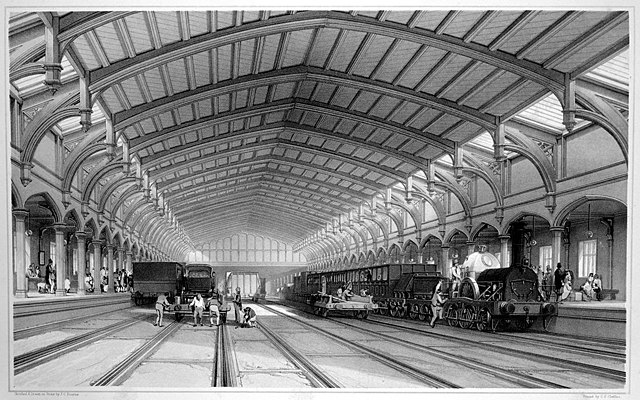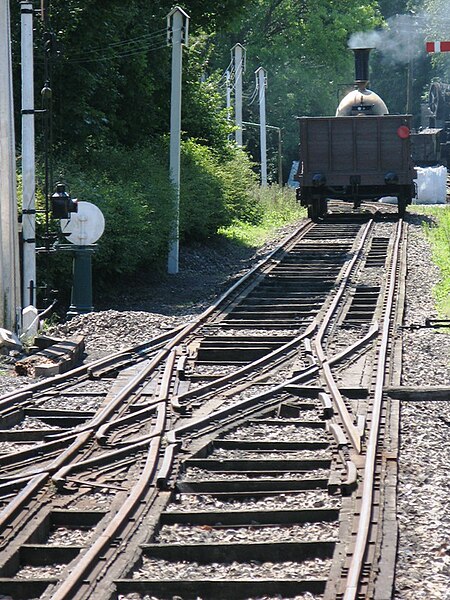Wilts, Somerset and Weymouth Railway
The Wilts, Somerset and Weymouth Railway (WS&WR) was an early railway company in south-western England. It obtained Parliamentary powers in 1845 to build a railway from near Chippenham in Wiltshire, southward to Salisbury and Weymouth in Dorset. It opened the first part of the network but found it impossible to raise further money and sold its line to the Great Western Railway (GWR) in 1850.
Frome station and roof in 2016
Trowbridge station in 1908
A modern train at Bradford-on-Avon.
Bradford on Avon station in 1897
The Great Western Railway (GWR) was a British railway company that linked London with the southwest, west and West Midlands of England and most of Wales. It was founded in 1833, received its enabling act of Parliament on 31 August 1835 and ran its first trains in 1838 with the initial route completed between London and Bristol in 1841. It was engineered by Isambard Kingdom Brunel, who chose a broad gauge of 7 ft —later slightly widened to 7 ft 1⁄4 in —but, from 1854, a series of amalgamations saw it also operate 4 ft 8+1⁄2 in standard-gauge trains; the last broad-gauge services were operated in 1892.
The interior of Brunel's train-shed at Temple Meads, the first Bristol terminus of the GWR, from an engraving by J. C. Bourne.
The Sonning Cutting in 1846
A broad-gauge train on mixed-gauge track
New corridor coaches on the Cornish Riviera Express








